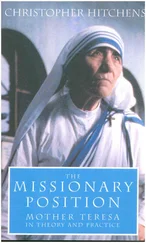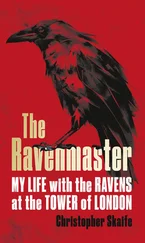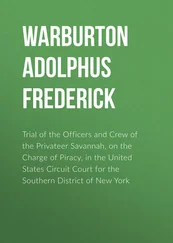Two other movements, now mercifully defeated or collapsed, provide a further connection between religious and secular apocalypse—so concluded Norman Cohn in the closing pages of The Pursuit of the Millennium . The genocidal tendency among the apocalyptic medieval movements faded somewhat after fifteen hundred. Vigorous end-time belief continued, of course, in the Puritan and Calvinist movements, the Millerites, as we have seen, and in the American Great Awakening, Mormonism, Jehovah’s Witnesses, and the Adventist movement. The murderous tradition, however, did not die away completely. It survived the passing of centuries in various sects, various outrages, to emerge in the European twentieth century transformed, revitalized, secularized, but still recognizable in what Cohn depicts as the essence of apocalyptic thinking—“the tense expectation of a final, decisive struggle in which a world tyranny will be overthrown by a ‘chosen people’ and through which the world will be renewed and history brought to its consummation.” The will of god was transformed in the twentieth century into the will of history, but the essential demand remained, as it still does today—“to purify the world by destroying the agents of corruption.” The dark reveries of Nazism about the Jews shared much with the murderous anti-Semitic demonology of medieval times. An important additional element, imported from Russia, was The Protocols of the Elders of Zion , the 1905 Tsarist police forgery, elevated by Hitler and others into a racist ideology. (It’s interesting to note how the Protocols has re-emerged as a central text for Islamists, frequently quoted on Web sites, and sold in street book stalls across the Middle East.) The Third Reich and its dream of a thousand-year rule was derived, in a form of secular millennial usurpation, directly from Revelation. Cohn draws our attention to the apocalyptic language of Mein Kampf : “If our people…fall victims to these Jewish tyrants of the nations with their lust for blood and gold, the whole earth will sink down…if Germany frees itself from this embrace, this greatest of dangers for the peoples can be regarded as vanquished for all the earth.”
In Marxism in its Soviet form, Cohn also found a continuation of the old millenarian tradition of prophecy, of the final violent struggle to eliminate the agents of corruption—this time it is the bourgeoisie who will be vanquished by the proletariat in order to enable the withering away of the state and usher in the peaceable kingdom. “The kulak…is prepared to strangle and massacre hundreds of thousands of workers…Ruthless war must be waged on the kulaks! Death to them!” Thus spoke Lenin, and his word, like Hitler’s, became deed.
Thirty years ago, we might have been able to convince ourselves that contemporary religious apocalyptic thought was a harmless remnant of a more credulous, superstitious, pre-scientific age, now safely behind us. But today prophecy belief, particularly within the Christian and Islamic traditions, is a force in our contemporary history, a medieval engine driving our modern moral, geo-political, and military concerns. The various jealous sky-gods—and they are certainly not one and the same god—who in the past directly addressed Abraham, Paul, or Mohammed, among others, now indirectly address us through the daily television news. These different gods have wound themselves inextricably around our politics and our political differences.
Our secular and scientific culture has not replaced or even challenged these mutually incompatible, supernatural thought systems. Scientific method, skepticism, or rationality in general, has yet to find an overarching narrative of sufficient power, simplicity, and wide appeal to compete with the old stories that give meaning to people’s lives. Natural selection is a powerful, elegant, and economic explicator of life on earth in all its diversity, and perhaps it contains the seeds of a rival creation myth that would have the added power of being true—but it awaits its inspired synthesizer, its poet, its Milton. The great American biologist E. O. Wilson has suggested an ethics divorced from religion, and derived instead from what he calls biophilia, our innate and profound connection to our natural environment—but one man alone cannot make a moral system. Science may speak of probable rising sea levels and global temperatures, with figures that it constantly refines in line with new data, but on the human future it cannot compete with the luridness and, above all, with the meaningfulness of the prophecies in the Book of Daniel, or Revelation. Reason and myth remain uneasy bedfellows.
Rather than presenting a challenge, science has in obvious ways strengthened apocalyptic thinking. It has provided us with the means to destroy ourselves and our civilization completely in less than a couple of hours, or to spread a fatal virus around the globe in a couple of days. And our spiraling technologies of destruction and their ever-greater availability have raised the possibility that true believers, with all their unworldly passion, their prayerful longing for the end times to begin, could help nudge the ancient prophecies towards fulfillment. Wojcik quotes a letter by the singer Pat Boone addressed to fellow Christians. All out nuclear war is what he appears to have had in mind. “My guess is that there isn’t a thoughtful Christian alive who doesn’t believe we are living at the end of history. I don’t know how that makes you feel, but it gets me pretty excited. Just think about actually seeing, as the apostle Paul wrote it, the Lord Himself descending from heaven with a shout! Wow! And the signs that it’s about to happen are everywhere.”
If this possibility of a willed nuclear catastrophe appears too pessimistic or extravagant, or hilarious, consider the case of another individual, remote from Pat Boone—President Ahmadinejad of Iran. His much reported remark about wiping Israel off the face of the earth may have been mere bluster of the kind you could hear any Friday in a thousand mosques around the world. But this posturing, coupled with his nuclear ambitions, become more worrying when set in the context of his end-time beliefs. In Jamkaran, a village not far from the holy city of Qum, a small mosque is undergoing a 20 million dollar expansion, driven forward by Ahmadinejad’s office. Within the Shi’ite apocalyptic tradition, the Twelfth Imam, the Mahdi, who disappeared in the ninth century, is expected to reappear in a well behind the mosque. His re-emergence will signify the beginning of the end days. He will lead the battle against the Dajjal, the Islamic version of the anti-Christ, and with Jesus as his follower, will establish the global Dar el Salaam, the dominion of peace, under Islam. Ahmadinejad is extending the mosque to receive the Mahdi, and already pilgrims by the thousands are visiting the shrine, for the president has reportedly told his cabinet that he expects the visitation within two years.
Or again, consider the celebrated case of the red heifer, or calf. On the Temple Mount in Jerusalem, the end-time stories of Judaism, Christianity, and Islam converge in both interlocking and mutually exclusive ways that are potentially explosive—they form incidentally the material for the American novelist Bob Stone’s fine novel, Damascus Gate . What is bitterly contested is not only the past and present, it is the future. It is hardly possible to do justice in summary to the complex eschatologies that jostle on this thirty-five acre patch of land. The stories themselves are familiar. For the Jews, the Mount—the biblical Mount Moriah—is the site of the First Temple, destroyed by Nebuchadnezzar in 586 B.C., and of the Second Temple destroyed by the Romans in 70 A.D. According to tradition, and of particular interest to various controversial groups, including the Temple Institute, the Messiah, when he comes at last, will occupy the Third Temple. But that cannot be built, and therefore the Messiah will not come, without the sacrifice of a perfectly unblemished red calf.
Читать дальше












